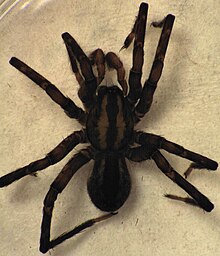
Gradungulidae, also known as large-clawed spiders, is a spider family endemic to Australia and New Zealand. They are medium to large-sized haplogyne spiders with three claws and two pairs of book-lungs similar to Mygalomorphae. Some species build extensive webs with an upper retreat tangle and connecting threads to scaffolding. This supports the ladder-like catching platform that is glued to the ground. Progradungula, a large spider with long legs like Hickmania, and Macrogradungula are the only cribellate genera of the family.

Progradungula is a genus of Australian large-clawed spiders that was first described by Raymond Robert Forster and Michael R. Gray in 1979. As of May 2024 it contains only three species: P. barringtonensis, P. carraiensis and P. otwayensis.

Mahura is a genus of South Pacific funnel weavers first described by Raymond Robert Forster & C. L. Wilton in 1973 and known only from New Zealand. They are fairly common, though small spiders, ranging from 1.5 to 3.5 millimetres long.

Paradictyna is a genus of South Pacific cribellate araneomorph spiders in the family Dictynidae, and was first described by Raymond Robert Forster in 1970. As of May 2019 it contains only two species, both found in New Zealand: P. ilamia and P. rufoflava.
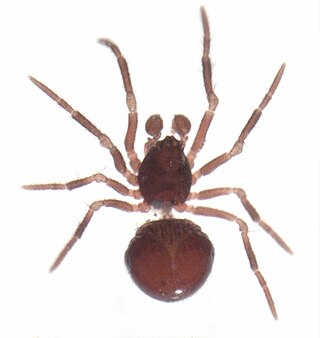
Zealanapis is a genus of South Pacific araneomorph spiders in the family Anapidae, first described by Norman I. Platnick & Raymond Robert Forster in 1989.

Orepukia is a genus of South Pacific araneomorph spiders in the family Cycloctenidae, known only from New Zealand. First described by Raymond Robert Forster & C. L. Wilton in 1973, it was originally placed in Agelenidae, but was transferred to Cycloctenidae in 2017. Their webs are built on the ground between fallen branches, logs, and other debris, and they are commonly found on the South Island, but hardly ever anywhere else. They range in size from 6 to 7.5 millimetres and lack a cribellum. Their eight eyes are in two rows, the anterior row straight and the other slightly curved. Their jaws are vertical and the labium is notched near the base.
Paravoca is a genus of South Pacific araneomorph spiders in the family Cycloctenidae, first described by Raymond Robert Forster & C. L. Wilton in 1973. As of April 2019 it contains only two species, both found in New Zealand.

Novanapis is a genus of South Pacific araneomorph spiders in the family Anapidae, containing the single species, Novanapis spinipes. It was first described by Norman I. Platnick & Raymond Robert Forster in 1989, and has only been found in New Zealand.

Tekelloides is a genus of South Pacific araneomorph spiders in the family Cyatholipidae, and was first described by Raymond Robert Forster in 1988. As of April 2019 it contains only two species, both found in New Zealand: T. australis and T. flavonotatus.
Uzakia is a monotypic genus of South Pacific araneomorph spiders in the family Cycloctenidae containing the single species, Uzakia unica. and has only been found in New Zealand.
Otagoa is a genus of South Pacific araneomorph spiders in the family Toxopidae, and was first described by Raymond Robert Forster in 1970. As of May 2019 it contains only three species, all found in New Zealand: O. chathamensis, O. nova, and O. wiltoni.
Viridictyna is a genus of South Pacific cribellate araneomorph spiders in the family Dictynidae, and was first described by Raymond Robert Forster in 1970.

Pianoa is a monotypic genus of large-clawed spiders endemic to New Zealand. It contains a single species, Pianoa isolata, known commonly as the piano flat spider.

Kapanga is a genus of South Pacific dwarf sheet spiders that was first described by Raymond Robert Forster in 1970.
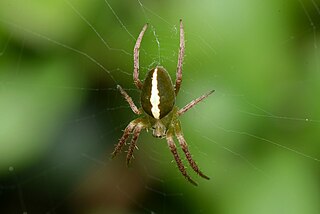
Colaranea is a genus of orb-weaver spiders first described by D. J. Court & Raymond Robert Forster in 1988 that are endemic to New Zealand.
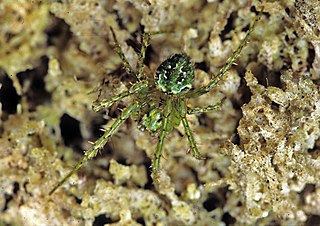
Cryptaranea is a genus of South Pacific orb-weaver spiders first described by D. J. Court & Raymond Robert Forster in 1988.

Novakiella is a genus of South Pacific orb-weaver spiders. Previously monotypic containing the single species, Novakiella trituberculosa found in Australia and New Zealand, a second species was recognised in 2021, Novakiella boletus.
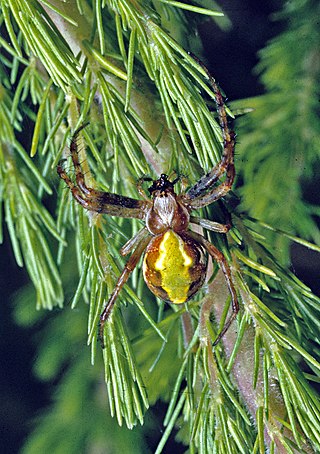
Novaranea is a genus of South Pacific orb-weaver spiders first described by D. J. Court and Raymond Robert Forster in 1988. As of April 2019, it contains only two species.

Kaitawa is a monotypic genus of South Pacific ground spiders containing the single species, Kaitawa insulare. It was first described by Raymond Robert Forster in 1979, who separated Cheiracanthium insulare from Cheiracanthium into this genus, retaining the species name. It has only been found in New Zealand.

Lamina is a genus of South Pacific araneomorph spiders in the family Toxopidae, and was first described by Raymond Robert Forster in 1970.
